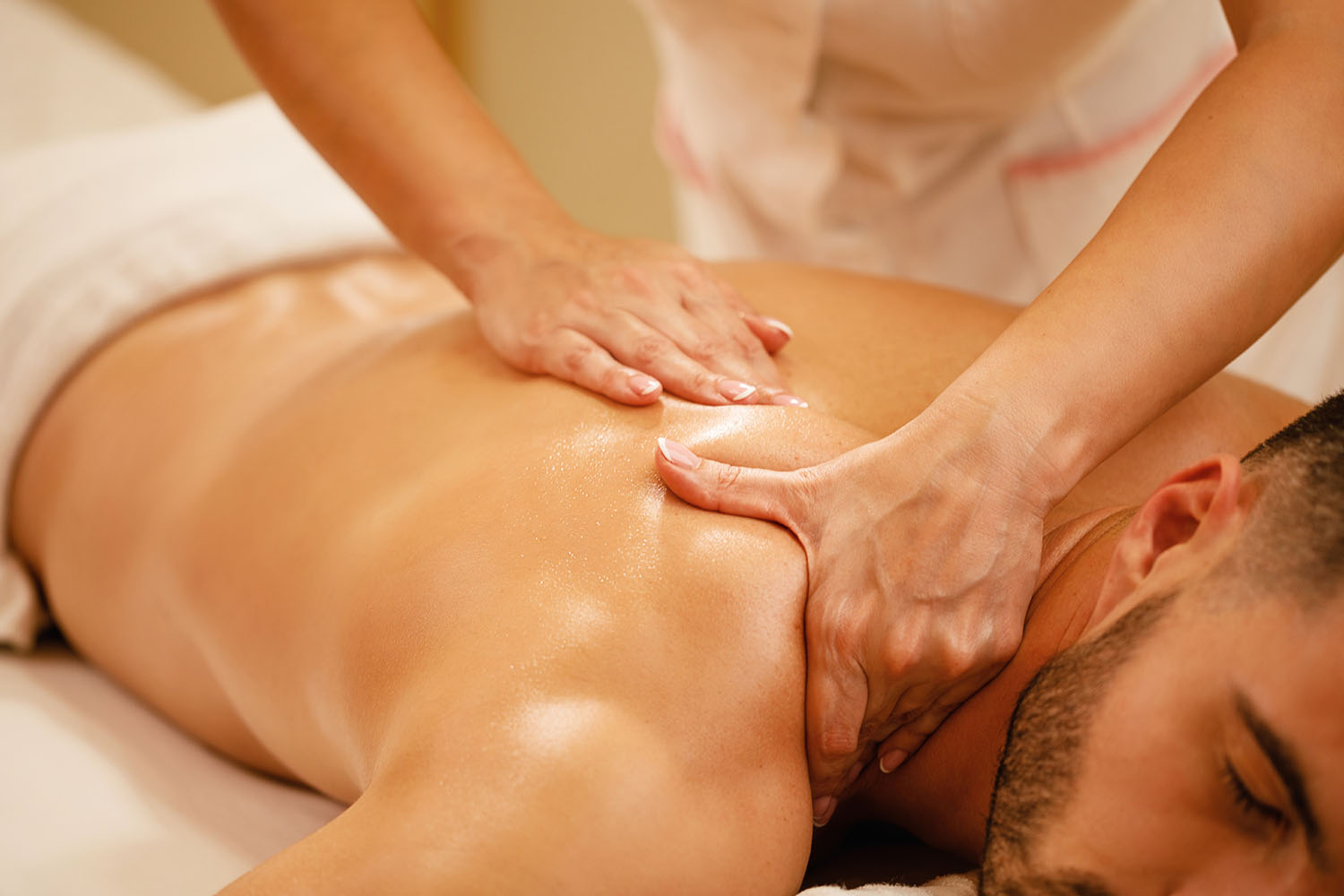Deep tissue massage is primarily effective for relieving musculoskeletal problems caused by sports injuries, long work hours, and chronic physical stress. It comprises pressure-sustaining deep strokes that target the internal tensed and tight muscles, breaking the scar tissue to promote healing.
The technique works well for muscular strains in the legs, back, neck, shoulder, and hips. However, it can also work on arms or feet (to relieve an elbow injury while playing). Deep tissue massage includes intense massaging patterns, but one doesn’t experience much pain. In the upcoming section, we’ll explore what benefits the technique offers.

Advantages Deep Tissue Massage Offers
Before exploring the countless benefits of this bodywork, it is essential to understand that it differs from all the other massage techniques. Regular massages, like Swedish massage, relieve surface tension, while deep tissue massage focuses on healing the deeper tissues.
1. Relieve Chronic Pain
Deep tissue massage can significantly benefit individuals suffering from chronic conditions like sciatica or fibromyalgia [1]. The rhythmic movements and strokes relieve muscle knots, speeding up healing.
It also promotes blood circulation and oxygen supply, which reduces muscular stiffness. The technique also helps relieve natural endorphins, which in turn reduce pain. Therefore, regular sessions with expert massagers ensure effective chronic pain management and better well-being.
2. Increases Athletic Performance
Injuries and strains are inevitable for athletes. Some are less intense, and the body can recover quickly. However, others require extra effort to heal and promote physical fitness. Experts recommend including massages like deep tissue massage in your routine.
Lactic build-up occurs during the hard sessions, which leads to discomfort as the nutrients and blood fail to reach the exerted areas. This, in turn, leads to muscle stiffness. Scheduling massage sessions after your training sessions reduces muscle fatigue, so your performance remains top-notch in every game.
3. Prevents Muscle Damage
Sports or injuries from other exertions cause adhesions, which lead to muscular damage. However, deep tissue massage uses firm pressure to target the deeper connective tissues, effectively relieving muscular pain.
The increase in blood ensures that nutrients are supplied to the muscles, promoting healing. It also produces a compound called mitochondria, which strengthens cell metabolism to speed up healing. [1]
4. Relieves Inflammation
When an injury occurs, the body produces a cushion around the affected tissues to prevent infections. In other words, inflammation is your body’s natural defense to prevent infections. However, more inflammation causes damage as it pressures the surrounding nerves and tissues.
Physical mechanisms like deep tissue massage move the stagnant blood in such parts, ensuring healing. Furthermore, it kicks into your immune system, and your body reduces the production of inflammation-fluid, lowering the swellings.
5. Reduces Stress
Stress is the natural way of responding to emotional and physical demands. It is more like your body’s survival mode. However, when the situation resolves, it leaves your body winded, which results in both nervous and muscular strain.
Massage techniques reduce stress as they lead to better blood flow, reduced heart rate, and release of endorphins, which relax your mind and body. Athletes prefer massages before or after their games to relieve post- and pre-game stress and regulate heightened emotions. [2]
6. Promotes Recovery
Injuries are everyday occurrences for individuals who like moving their bodies. However, sometimes, your body needs an extra kick to recover entirely from an injury. Massage techniques are among the most successful solutions for relieving sports injuries or post-surgical recoveries.
When muscles are tense, they tend to accumulate lymphatic fluid, which increases inflammation and stiffness and results in declined blood circulation. The therapeutic strokes in a deep tissue massage can significantly help release the tension in the affected areas, leading to recovery.
7. Relieves Joint Pain
Joint pain and inflexibility are two other problems that massages relieve. These conditions arise for many reasons, but muscle overuse and soreness are the most common causes. Reduced flexibility ultimately leads to pain and restricted joint movements.
Deep tissue massage is one of the most effective ways to promote joint flexibility [3]. As the pressure strokes release the stiffness in the tissues, their elasticity increases, ensuring less joint pain. The gradual rise in body temperatures lessens the strain on muscles, promoting relaxation and a better mood.
How To Choose The Right Deep Tissue Massage Therapist?
Deep tissue massage offers countless benefits whether you are an athlete, a sportsman, or a working individual. However, carefully selecting the right massage therapist is critical to ensure all the perks above. Here is a quick breakdown of everything you must consider before scheduling an appointment.
- Research thoroughly about the massage therapists available in your local areas. Usually, they are clinic-based, but some offer home services as well. Ensure that they have the needed certifications and licenses.
- Next, research their experience, especially in deep tissue massage. Read reviews to gauge their reputations.
- If you have specific health conditions, inquire about how the therapists will handle them or if they have handled any such cases in the past.
- Discuss your comfort level with the therapist’s gender and touch. Furthermore, verify that their availability aligns with your schedule.
- Lastly, compare pricing and packages to find one that fits your budget.
The Bottom Line
Deep tissue massage is a prominent technique for relaxing muscular tension, soreness, and inflammation. It works well for chronic patients, athletes, and anyone who wants to recover from injuries or body stiffness.
Though the technique’s benefits are almost endless, it is recommended that you consult your doctor about pain management before making a decision. Once your scrutinization phase is complete, you can enjoy this relaxing massage by visiting Enhancing Massage’s clinic.
FAQs
- What to expect during a deep tissue massage?
It is essential to know that deep tissue massage is a slightly intense technique that targets deeper tissue recovery. However, it is not painful. You’ll feel the targeted muscle work and a soothing relaxation.
- How often should I get a deep-tissue massage?
The frequency of the therapy depends on individual needs, but once a month is common for maintenance and managing stress or pain. However, still, it is better to consult your doctor first.
- What things should I do before a deep tissue massage?
The things you must consider before a deep tissue massage include preparing a health information card (to inform the therapist if you’ve had any injuries or so), staying hydrated, taking a warm shower, and not taking heavy meals before the procedure. [5]
External Links
[5]https://www.richardfrancissalon.com/salon/2013/01/how-to-prepare-for-a-deep-tissue-massage/




